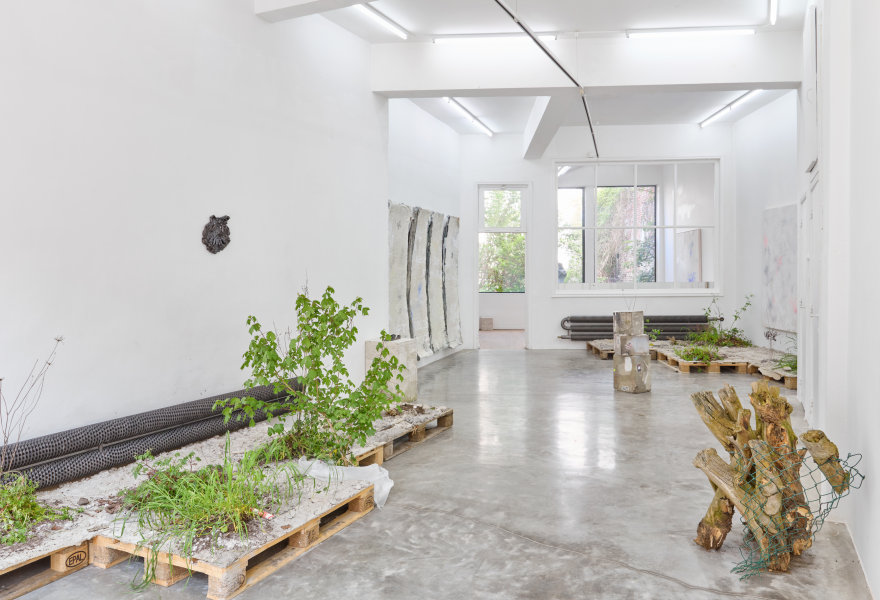16 may 2023, Wouter van den Eijkel
Places without Faces at DMW gallery Antwerp | A double interview with Kaspar Dejong and Ruben Raven
If your work fits seamlessly together thematically, why not create something together? Kaspar Dejong and Ruben Raven decided to do just that. For Dejong's Antwerp gallery debut, he asked Raven to participate. At DMW Gallery, they are presenting their own new work, as well as four co-productions, a video and a large-scale installation. A conversation about field trips, residual space, crochet and partnership.
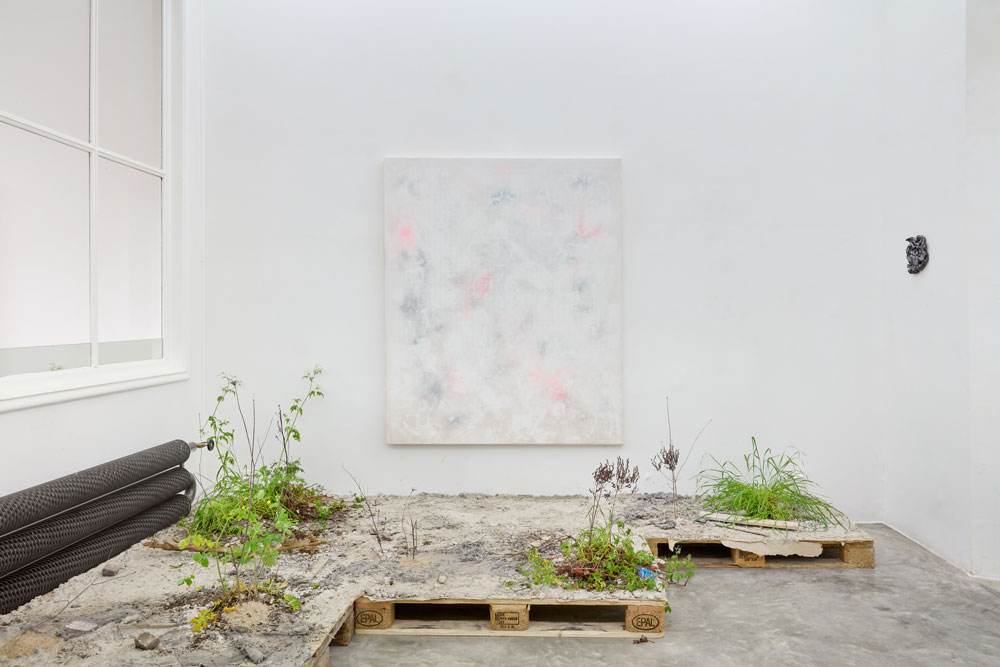
Ecnesba, Kaspar Dejong. 2023, DMW Gallery
After completing his studies at the Willem de Kooning Academy and Sandberg Institute, Dejong (NL, 1995) launched his career with abstract work originating in public space. He especially has an eye for things other people usually overlook, such as weeds popping up on shopping streets during the pandemic, still lifes of nitrous oxide cylinders found on the street or the international language of traffic signs.
Those nitrous oxide cylinders can also be seen at DMW in the form of ceramic wall sculptures. Dejong has also made a new series of glass works for the exhibition, a medium he has used in the past. “Last year, I learned a great deal from a glassmaker in Friesland and am now showing the initial results. I started working with glass during my studies at the Sandberg Institute and have experimented a lot with the material in recent years. The materiality of glass goes together well with my paintings because it has the same kind of fogginess.”
Palimpsest
Thematically, Dejong is treading familiar territory. “Places without Faces is primarily about places where the human hand can be felt and seen, but where people themselves are absent,” says Dejong from his home in Amsterdam. Dejong's interest in such places was aroused in his teenage years, when he explored abandoned places, undefined fringe areas within the urban domain, where there is room for ‘noisy space’. Begin a graffiti artist not only took him to ‘secondary places’, as he calls them, but also introduced him to the principle that regularly appears in his work. You make a tag, which is then removed, but something remains visible. A ‘palimpsest’ as he calls it.
Dejong's new solo work also reflects this. The pandemic and lockdowns led to a revaluation of public space. For many, walking was the only thing that was still allowed. Dejong also walked a lot, or rather, he often wandered aimlessly through the city and photographed things that caught his eye. He made a photo collage of each walk, which he then screen printed onto canvas. He then began adding and subtracting things until only a shadow of the original collage remained.
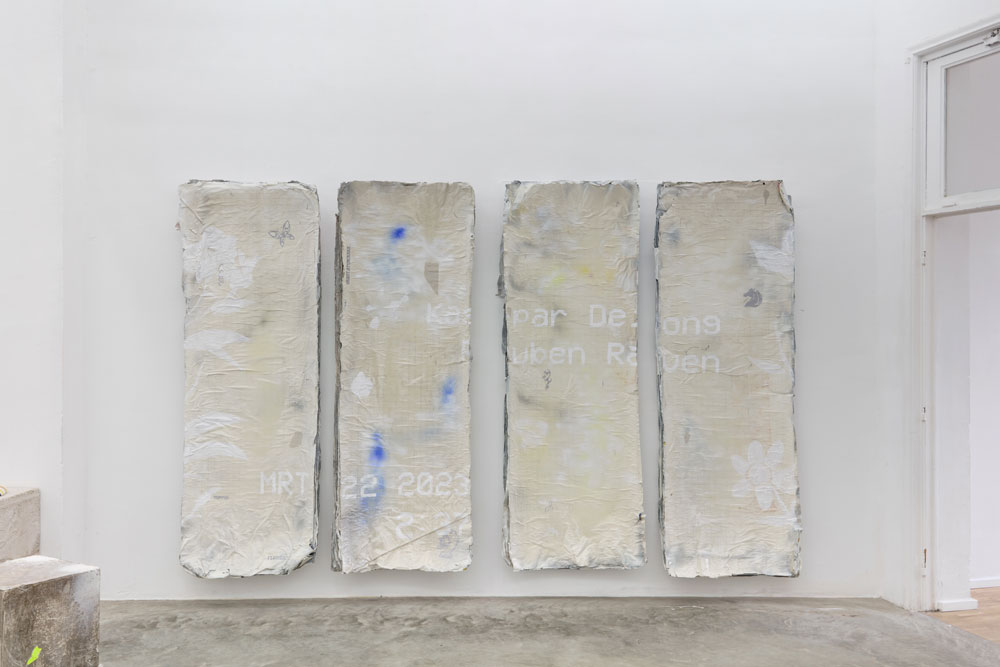
Duo work: Rip Commerce (palimpsest) Ruben Raven & Kaspar Dejong. 2023, DMW Gallery
Extensive cooperation
At DMW, you can see more works with a similar foundation: posters, advertisements, party announcements and political party campaigns. Posters that are pasted over again and again. “They’re old posters like you often see on streetlights, on the street or under bridges. Thick placards, poster on poster on poster. We painted them and ten poured a layer of epoxy over it to preserve the material.”
Dejong consistently speaks in plural because he made these four works together with Ruben Raven. Those who know the work of both artists will not be surprised that they have partnered up. Thematically, they deal with more or less the same subject: the traces that people leave behind in public space. Dejong explains, “There is an overlap in terms of work, but also a friendship. I noticed that when we showed work together, like at Art Rotterdam, we had the same kind of energy. So, I thought, let's combine that to achieve new things. That also applies to this Antwerp exhibition. Why shouldn't we do this together?”
For his graduation project, Raven created a sort of archaeological site of late 20th-century artifacts, such as CDs, a desktop computer, fax machine and videotapes. The result was a site where original objects were transformed into ceramics, frozen in time like fossils. The installation, made entirely of plaster, posed questions to the viewer about our utilitarian way of dealing with things, the value we assign to them and how we treat and forget about them.
“In terms of theme, there are absolutely similarities,” says Raven, “only the underlying process is entirely different. For Kaspar, there is more preparation time. They are snapshots in a way. On the other hand, I am very inquisitive when painting: how do you paint this or that?” Dejong comments, “My work is much more explosive, while Ruben’s painting is technically highly complex and time-consuming. Those different kinds of energy come together very nicely.”
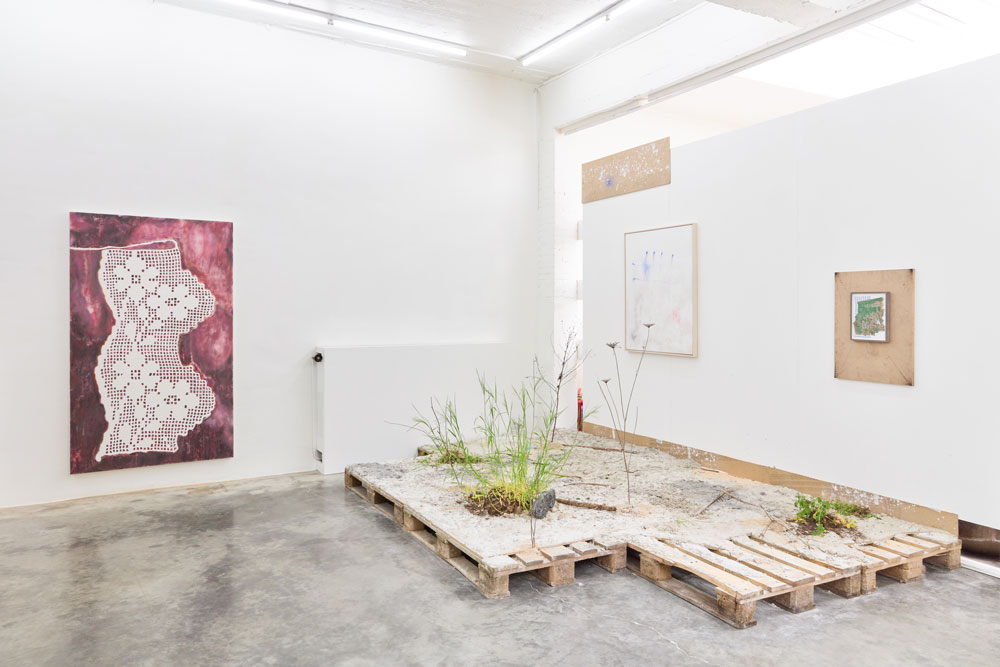
“Places Without Faces” DMW gallery. 2023
Field trips
Preparations for this show began last summer. In March of this year, works by Raven and Dejong were included in a group show in Belgrade. Whereas most artists would only send their work, Raven and Dejong decided to travel to the Serbian capital. They turned it into a field trip. After Belgrade, they visited Sarajevo, Berlin, Charleroi and Brussels.
“Seeing things together, documenting things together…” says Dejong, “everything from empty gum packs to shoes thrown over a lamppost.
Raven adds, “It’s sometimes difficult to get inspired in Amsterdam. Not only because we know the city by heart, but also because it has so much structure and therefore few elements of surprise. In Belgrade, there were plenty of surprises: things that don’t make sense, architecture that is intertwined, bullet holes, dirty walls. It's a completely different world.” Dejong adds, “You need that residual space to create such pieces and although you’ll find it in Amsterdam, it is not really in the centre of the city or only in a few places.”
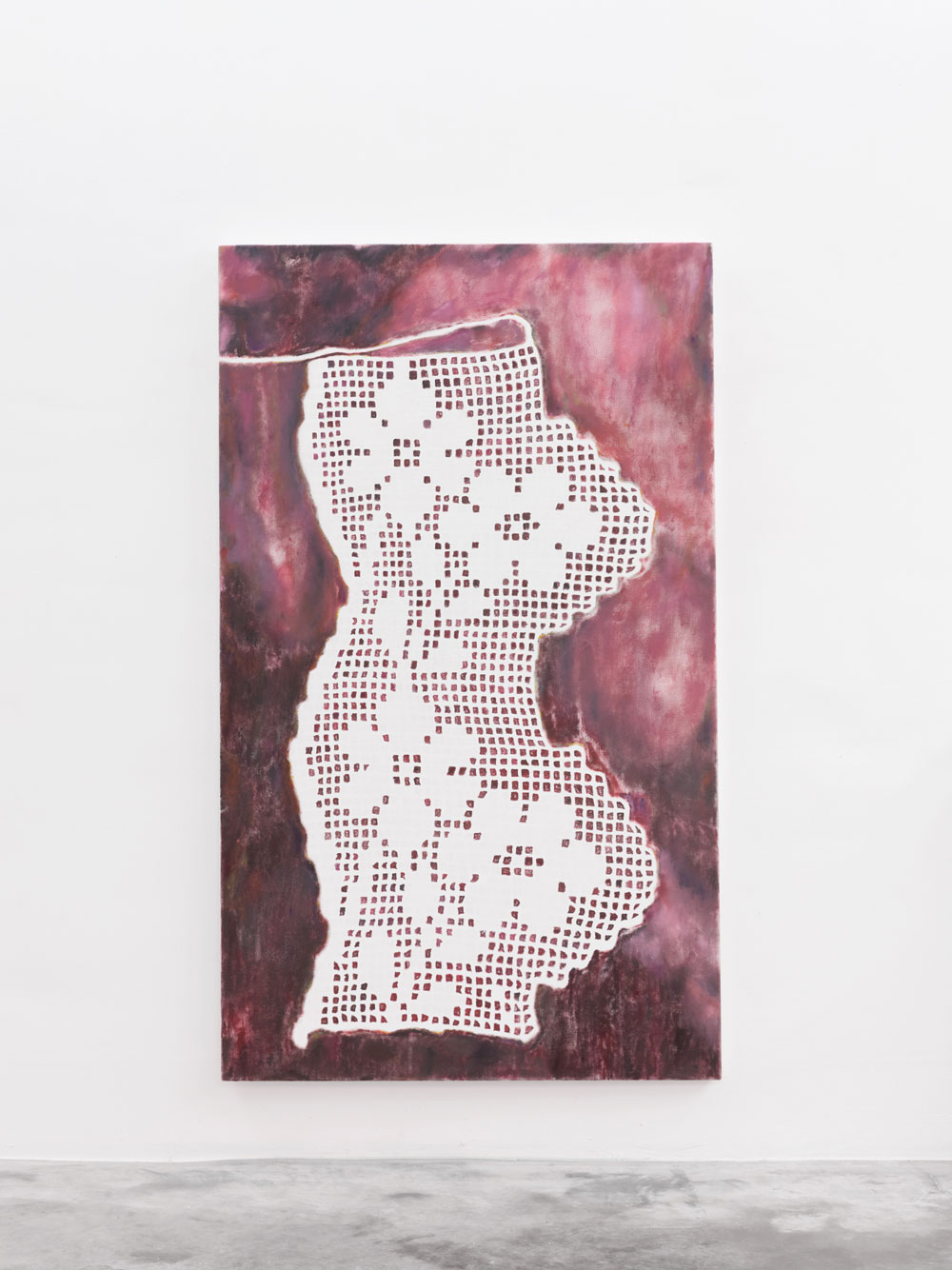
Crochet 1, Ruben Raven. 2023, DMW Gallery
An eBay for crochet patterns
Raven’s new work also shows that this trip was a productive one. “Crochet work in the Netherlands is only found among older generations, but in Bosnia, I came across this visual language everywhere. The representations turned out to be endless: dogs, cats, flowers, anything really. If I had stayed home, I would have continued to associate that visual language with old people's homes, but this kind of a trip lets you discover that you can use this visual language.”
Back in Amsterdam, Raven spent hours online looking for crochet images and came across an Eastern European eBay for patterns. “I found some images online, cut them out and used them as inspiration. It took a lot of time to make the paintings because I had to figure out how to paint them, this is also an important part of my work, to keep moving and to explore new themes. Innovation is essential.”
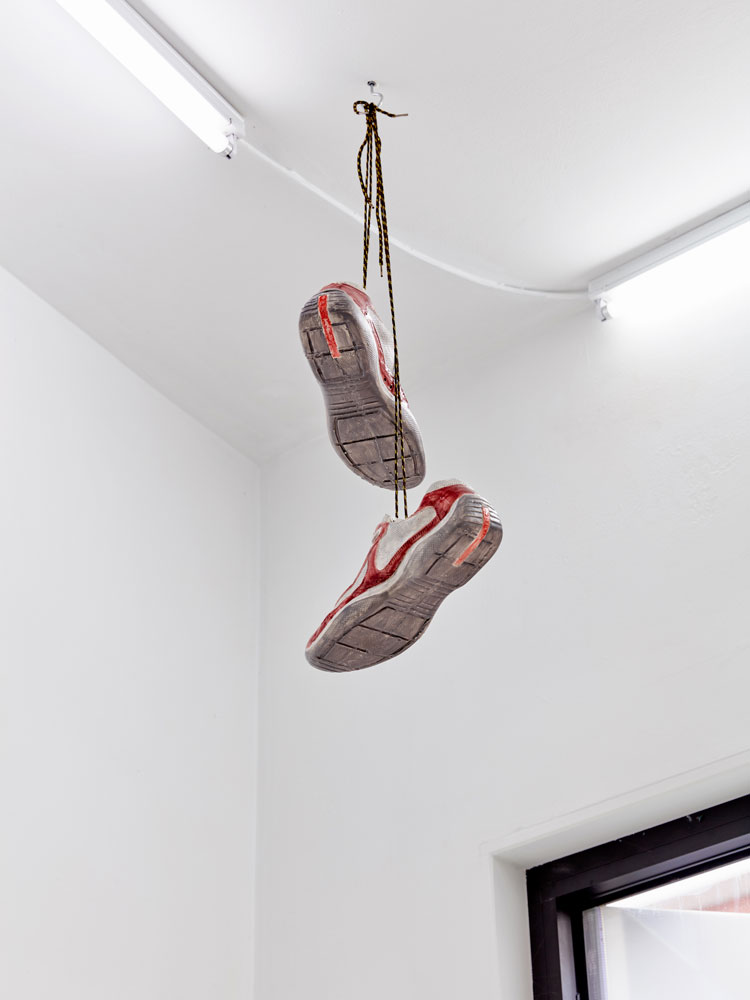
Ceramic Prada’s. Ruben Raven 2022, DMW Gallery
